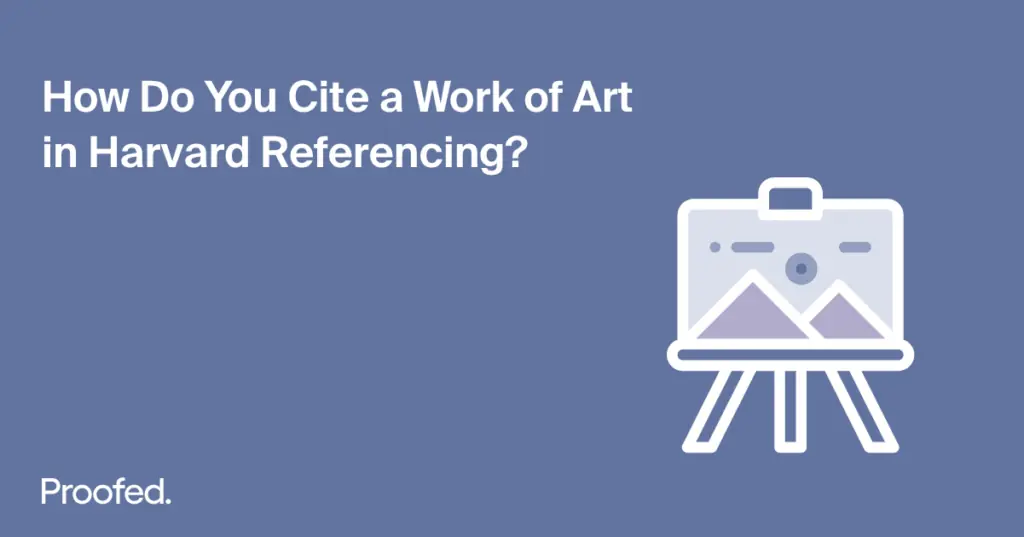If you’re writing about art in an essay, you’ll need to know how to cite and reference works of art correctly. In this post, we’ll look at how to cite an artwork from a museum or online collection using the Harvard referencing system.
Citing a Visual Artwork in Harvard Referencing
Harvard referencing uses author–date citations. For an artwork, this means giving the name of the artist and the year of production. For instance:
Turner (1839) depicts the warship in all her prior glory.
Irony is used to comment on society’s consumerism (Banksy, 2008).
Here, we’re citing The Fighting Temeraire by J. M. W. Turner and Very Little Helps by Banksy. You would then provide the full details of the works cited in a reference list.
Referencing an Artwork from a Museum
Any artworks you cite in your work should be added to your reference list. But the exact format for this will depend on how you viewed the artwork. For a work of art you viewed in person (e.g. at a museum), the basic format is:
Surname, Initial(s). (Year of production) Title of Image [Medium]. Collection or institution in which the work is held, Location.
The ‘medium’ here refers to the type of artwork or the materials used in its creation. For instance, for the work by Turner cited above, the reference would be:
Turner, J. M. W. (1839) The Fighting Temeraire [Oil on canvas]. The National Gallery, London.
Sometimes, you may not have all the information above. For example, if you do not know the name of the artist, you can start the entry with the title of the work instead:
John Whitgift (1883) [Watercolour]. Pembroke College, Cambridge.
Find this useful?
Subscribe to our newsletter and get writing tips from our editors straight to your inbox.
And if an artwork has no title, you can give a description in italics:
Portrait of a young lady in a yellow dress (c.1830) [Oil on canvas]. Beecroft Art Gallery, Southend-on-Sea.
The key is providing enough information for the reader to find the artworks you cite. Thus, if an artwork has no title, make sure the description is distinctive enough to differentiate it from other works in the same collection.
Citing an Artwork from an Online Collection
If you view an artwork online rather than in person, add details of the website to your reference entry. The basic format for an online artwork is therefore:
Surname, Initial(s). (Year of production) Title of Image [Medium]. Name of collection [Online]. Available at URL (Accessed date).
A reference the Banksy artwork we cited earlier, for example, would look like this:
Banksy (2008) Very Little Helps [Stencil on concrete]. [Online]. Available at www.artofthestate.co.uk/london-street-art-2/banksy-street-art/banksy-street-work/banksy-very-little-helps-aka-tesco-kids (Accessed 9 December 2020).
The rules for works where the artist or title is not known also apply to artworks viewed online, so you can simply adapt the format here accordingly.
Harvard Variations and Proofreading
There are many versions of Harvard referencing, all of which vary in some ways. If you’re at university, it’s therefore a good idea to check your school’s website or course materials for a style guide. This will tell you the exact citation style to use.
If you need a little extra help to make sure your writing is error free and your referencing is correct, moreover, we have expert editors on hand! Why not upload a 500-word document for a free proofreading trial today?



